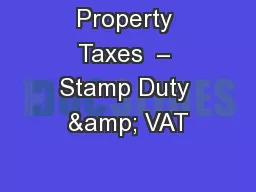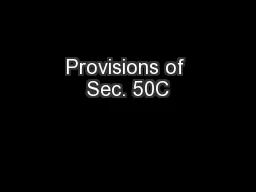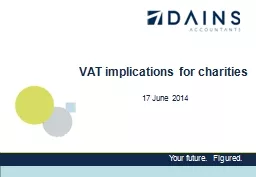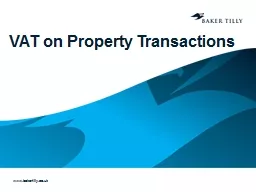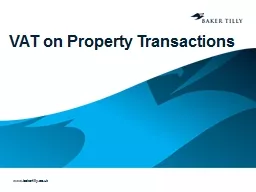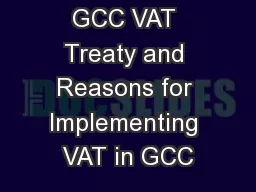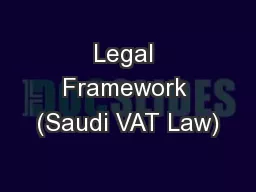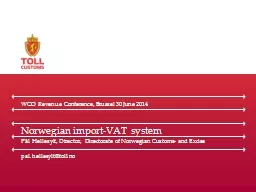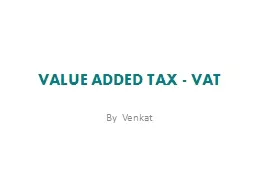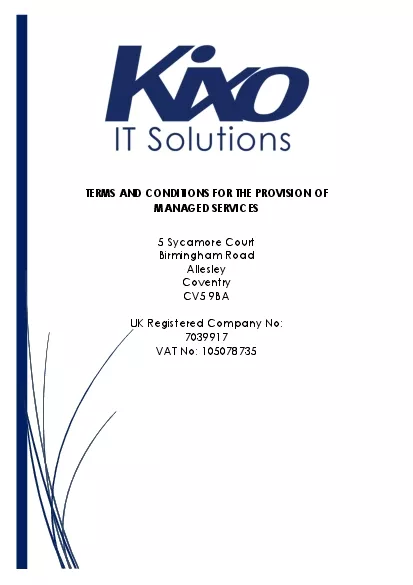PPT-Property Taxes – Stamp Duty & VAT
Author : celsa-spraggs | Published Date : 2018-03-19
Stamp Duty Land Tax SDLT Overview Applies to the purchase of additional residential property Payable in addition to the usual SDLT Certain exemptions apply including
Presentation Embed Code
Download Presentation
Download Presentation The PPT/PDF document "Property Taxes – Stamp Duty & VAT" is the property of its rightful owner. Permission is granted to download and print the materials on this website for personal, non-commercial use only, and to display it on your personal computer provided you do not modify the materials and that you retain all copyright notices contained in the materials. By downloading content from our website, you accept the terms of this agreement.
Property Taxes – Stamp Duty & VAT: Transcript
Download Rules Of Document
"Property Taxes – Stamp Duty & VAT"The content belongs to its owner. You may download and print it for personal use, without modification, and keep all copyright notices. By downloading, you agree to these terms.
Related Documents

